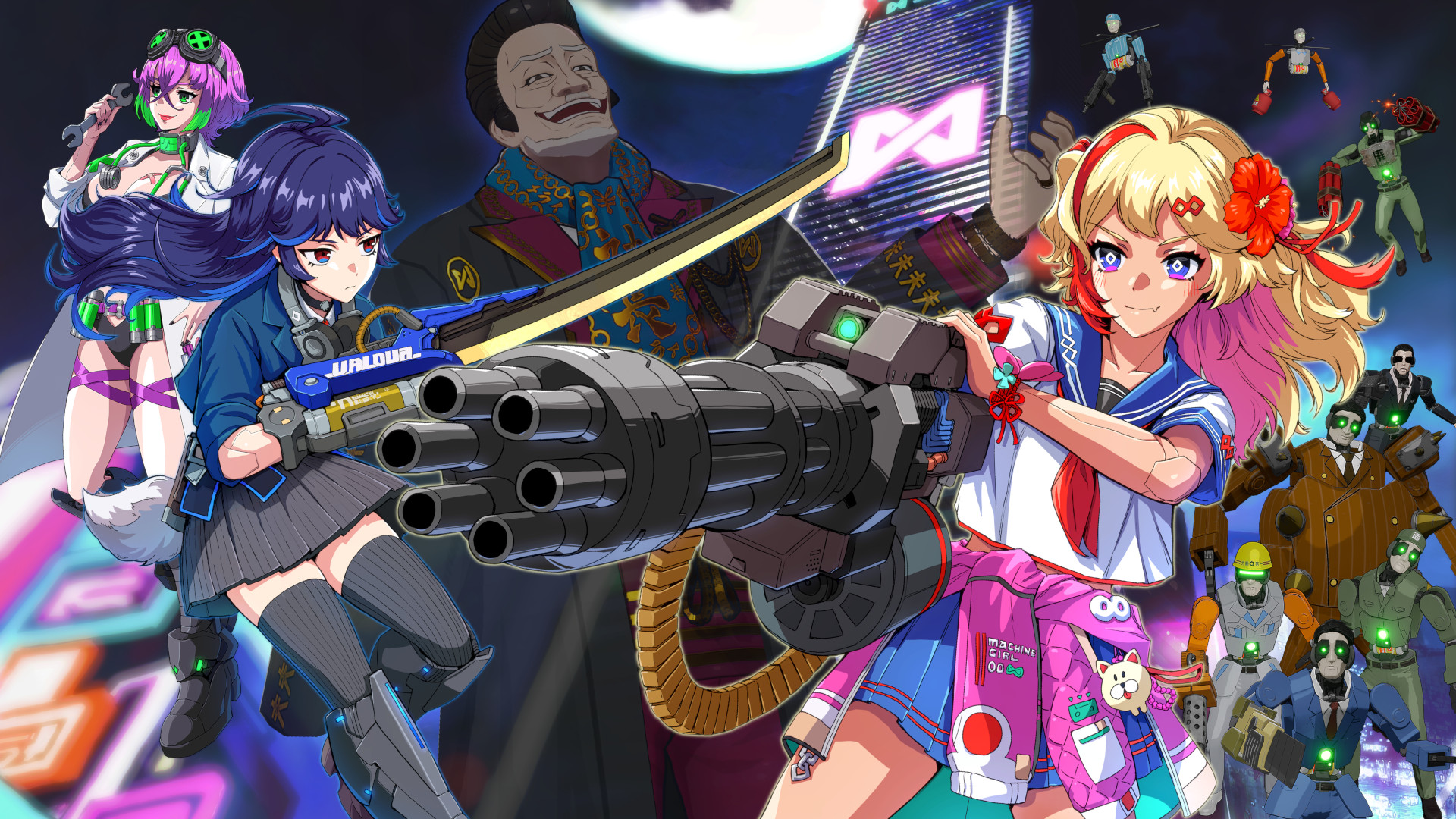Sometimes, while scrolling through the eShop, you stumble upon a game that hints at a life-changing experience. Sometimes it delivers, sometimes it doesn’t—but at least you get a few laughs along the way. That’s exactly what happened when I tried *Full Metal Schoolgirl*, the second game released in October 2025 from former WWE developer and occasional Earth Defense Force collaborator, Yuke’s.
### A World Tired of the Boss’s Nonsense
*Full Metal Schoolgirl* bursts with energy and a dynamite sense of humor, but unfortunately, its gameplay feels deeply undercooked and struggles to stand out in an oversaturated genre.
The premise is perfect for our times. The game’s world is dominated by corporate ownership, which has solved a labor crisis by creating a nearly fully inorganic cyborg workforce. These cyborg employees eagerly push papers, tap at computers, and perform endless tasks without pause. However, this has led to widespread abuse, and two particularly colorful cyborg women have finally had enough.
To take down the evil CEO of Meternal Jobz, these “Machine Girls” must climb a 100-floor skyscraper, dismantle the company’s management layer by layer, and ultimately face the man himself.
At first glance, the aesthetic may come off as low-rent anime-flavored cheesecake, but *Full Metal Schoolgirl* is actually a chaotic workplace satire. It’s surprisingly funny—the English dub, in particular, deserves praise for capturing all the sad, office-culture-filtered whimpering of the enemies being defeated. The theme song is absolutely unhinged, and the localization overall is on fire. The world-building flair is a riot, and the translation team deserves hearty commendation for their work.
### The Gameplay Disappointment
I was ready to have a blast just based on the game’s vibe, but sadly, I walked away wishing this fascinating premise was paired with a better game.
*Full Metal Schoolgirl* is a roguelike—because nowadays, everything has to be a roguelike, as if decreed by some unwritten video game law. This isn’t the game’s fault, but its unapologetically generic progression structure certainly is.
Between runs, you gather resources and spend them increasing your stats. Stronger stats help you survive bosses, which unlocks higher levels. That’s the entirety of the progression loop. You unlock a few new abilities along the way, but they barely change the gameplay and often feel like tutorialized gatekeeping rather than meaningful additions.
The problem is worsened by overly simple action mechanics that rarely evolve. You have a few basic physical attack strings and textbook weapon behaviors. Everything else, such as modifiers that speed up stamina regeneration or tweak maximum HP slightly, is passive with minor impact. Weapons appear between rooms but don’t meaningfully alter the gameplay beyond simple number tweaks.
For a genre that has moved beyond these basics—embracing innovative ideas, mashups, and complexity—*Full Metal Schoolgirl* feels dated and uninspired.
### Brainless Battling and Endless Grinding
What *Full Metal Schoolgirl* reminded me most of was user-made roguelike maps or islands in *Fortnite*. You start in a lobby with various weapons floating around to pick up, then fight repetitive, generic enemies using simple mechanics. After clearing a run, you return to upgrade stats just enough to inch closer to the end.
But unlike *Fortnite*, there’s no battle pass or flashy cosmetic rewards to justify grinding your brain to mush—just repetition for repetition’s sake.
### Final Thoughts
I had high hopes going into *Full Metal Schoolgirl*. My initial pitch for this review: “Hello, I want to play this because it looks insane.” It promised a fun, silly escape and even hinted at a cathartic, satirical takedown of apocalyptic labor practices.
But once the dreaded grind kicked in, it was clear this was going to be several hours of mindless battling paired with shallow game design. Such is the fate of some roguelikes in today’s market.
*Full Metal Schoolgirl* is available starting October 23, 2025, on PC, Nintendo Switch 2, and PlayStation 5. A Switch 2 code was provided by the publisher for this review.
https://www.shacknews.com/article/146472/full-metal-schoolgirl-review-score
